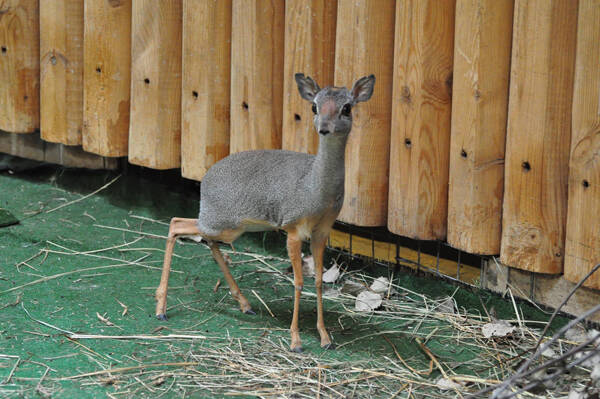Madoqua piacentinii
IUCN
LCBasic Information
Scientific classification
- name:Madoqua piacentinii
- Scientific Name:Madoqua piacentinii
- Outline:Ungulata
- Family:Artiodactyla Bovidae Oryctolagus
Vital signs
- length:45-50cm
- Weight:2-3kg
- lifetime:No verification information
Feature
The smallest antelope
Distribution and Habitat
The species lives from sea level to 1 km above sea level, with a distribution limited to a narrow strip of the coastal plains of east-central Somalia, and its range does not extend more than 10 km inland. In 2006, the species was also found in the valley bottoms of the upper valleys of the Shebel River and its seasonal tributaries in the Ogaden region of southern Ethiopia. It is unclear whether the distribution is continuous between the coast and the Ogaden, or divided into two parts. For example, populations observed in the Ogaden region of Ethiopia, the species seems likely to occur in other well-vegetated lowland areas of the Ogaden. They also occur in dense, slow-growing scrub along the coast of central Somalia.
Appearance
The silver antelope is the smallest of the antelopes. It is 45-50 cm long, 30-33 cm tall and weighs 2-3 kg. The tail is 3-4 cm long. The fur is silver-grey in colour, with sandy-stone colours on the limbs, ears and muzzle. The cheeks and back are creamy yellow, and the bridge of the nose is usually bright reddish-brown. A tuft of red hair can be seen on the head between the two small horns. The ears are relatively small with a black rim on the outer edge. Like the Cuvier's antelope, there is no white ring around the eyes.
Details
Silver Dik-dik (scientific name: Madoqua piacentinii) English: Silver Dik-dik, French: Dik-dik argente, German: Piacentini Dik-dik, no subspecies.

East (1999) estimated the total population on the Somali coast to be 30,000 based on an average density of 2.0/km2 (similar to M.saltiana) and an occupied area of 15,000 km². In Ogaden, Ethiopia, the density is estimated to be 1-2 individuals in an area of less than 2000 square meters, and the number is reported to appear stable (Wilhelmi et al., 2006). As the limit of distribution has not yet been determined, it is not possible to derive meaningful population estimates.
Listed in the IUCN Red List of Threatened Species in 2016 ver3.1 - Data Deficient (DD).
Protect wildlife and eliminate bushmeat.
Maintaining ecological balance is everyone's responsibility!








